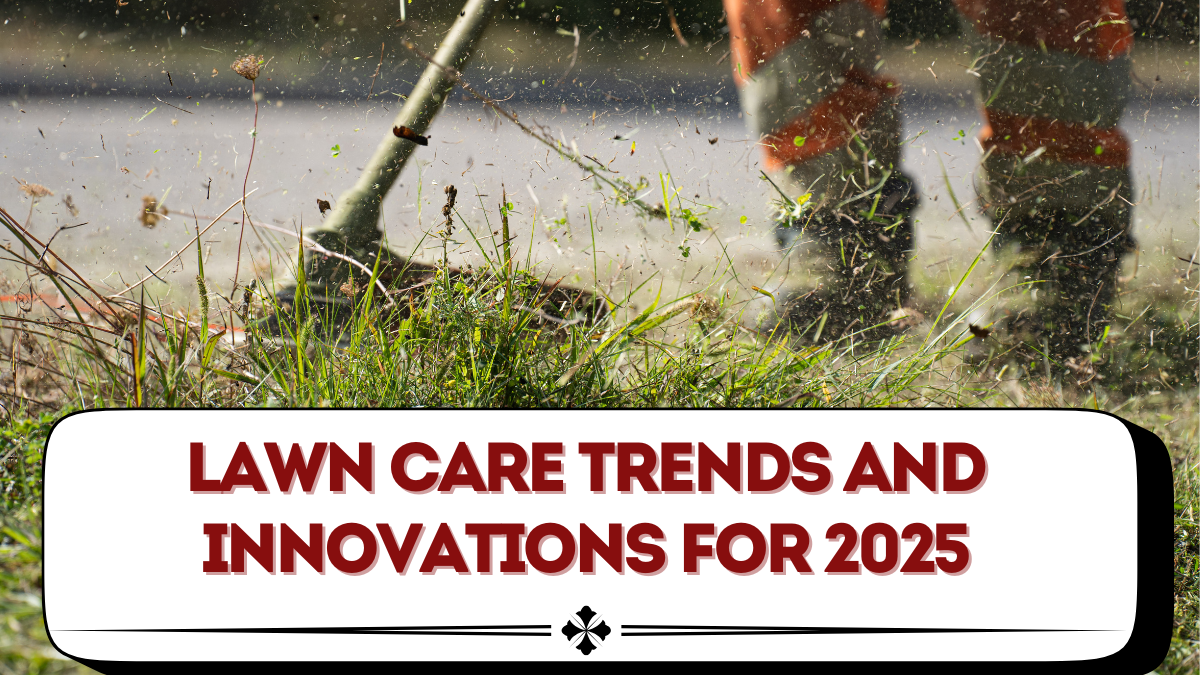Lawn care has come a long way from basic mowing and watering. In 2025, the industry is shaped by eco-friendly practices, advanced technologies, and the push for sustainability. Homeowners are no longer focused solely on appearance—they now want lawns that are healthier, more resilient, and environmentally responsible.
This article explores the top lawn care 2025 trends, from smart irrigation and robotic mowers to sustainable alternatives like clover lawns and organic fertilizers.

Why Lawn Care Is Changing in 2025
Several forces are reshaping how people approach lawn care:
-
Water Conservation Needs – Rising droughts are pushing homeowners toward smarter watering practices.
-
Sustainability Goals – Eco-friendly and organic products are replacing chemical-heavy solutions.
-
Technology Integration – Robotics and AI are simplifying lawn management.
-
Lifestyle Shifts – People are spending more time at home, making outdoor spaces central to their lifestyle.
Top Lawn Care Trends in 2025
Smart Irrigation Systems
IoT-enabled sprinklers adjust watering schedules based on weather forecasts, reducing water waste and costs.
Robotic Lawn Mowers
Autonomous mowers cut grass efficiently, saving time while maintaining consistent height.
Eco-Friendly Fertilizers
Organic and plant-based fertilizers replace synthetic chemicals, improving soil health and reducing pollution.
Clover and Wildflower Lawns
Low-maintenance alternatives like clover and pollinator-friendly wildflowers are gaining popularity for their resilience.
AI-Powered Lawn Apps
Homeowners use AI apps to identify diseases, monitor grass health, and receive tailored care advice.
Sustainable Lawn Care Practices
-
Mulching grass clippings to improve soil nutrition.
-
Reducing pesticide use with natural pest control.
-
Using drought-tolerant grass varieties.
-
Composting to recycle organic waste into nutrients.
Comparison of Lawn Care Methods 2025
| Method | Benefit | Eco Impact | Cost |
|---|---|---|---|
| Traditional Chemical Fertilizers | Fast results | High pollution | Medium |
| Organic Fertilizers | Improves soil health | Low impact | Medium |
| Clover Lawns | Low water use | Eco-friendly | Low |
| Smart Irrigation | Water-efficient | Saves resources | Higher upfront |
| Robotic Mowers | Saves time | Low emissions | High |
This shows how new methods balance efficiency, sustainability, and affordability.
Future of Lawn Care Beyond 2025
By 2030, expect lawns to be even smarter and greener. AI-powered lawn bots may fully manage watering, mowing, and fertilization. Eco-friendly legislation may also limit chemical fertilizers, pushing more homeowners toward sustainable options.
FAQs
What is the biggest lawn trend in 2025?
Smart irrigation and robotic mowers are the leading innovations, making lawn care easier and more efficient.
Are clover lawns better than grass?
Yes, clover lawns require less water, resist weeds, and attract pollinators, making them a sustainable alternative.
How do AI lawn apps work?
They use photo recognition and soil data to detect diseases, recommend treatments, and track lawn health.
Can organic fertilizers replace chemicals fully?
Yes, though results may take longer, organic fertilizers improve long-term soil health without harming the environment.
Do robotic mowers save money?
They require a higher upfront cost but save time and maintenance in the long run.
Conclusion
The lawn care trends of 2025 highlight a major shift toward sustainability, smart technology, and eco-conscious practices. From clover lawns and organic fertilizers to AI-powered apps and robotic mowers, homeowners are embracing innovations that make lawns greener, healthier, and easier to manage. These changes not only improve curb appeal but also contribute to a more sustainable future.
Click here to know more.
